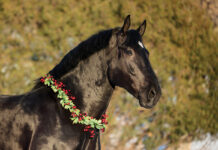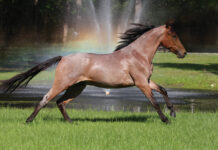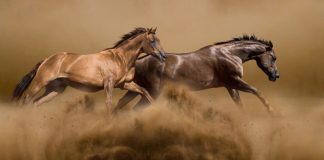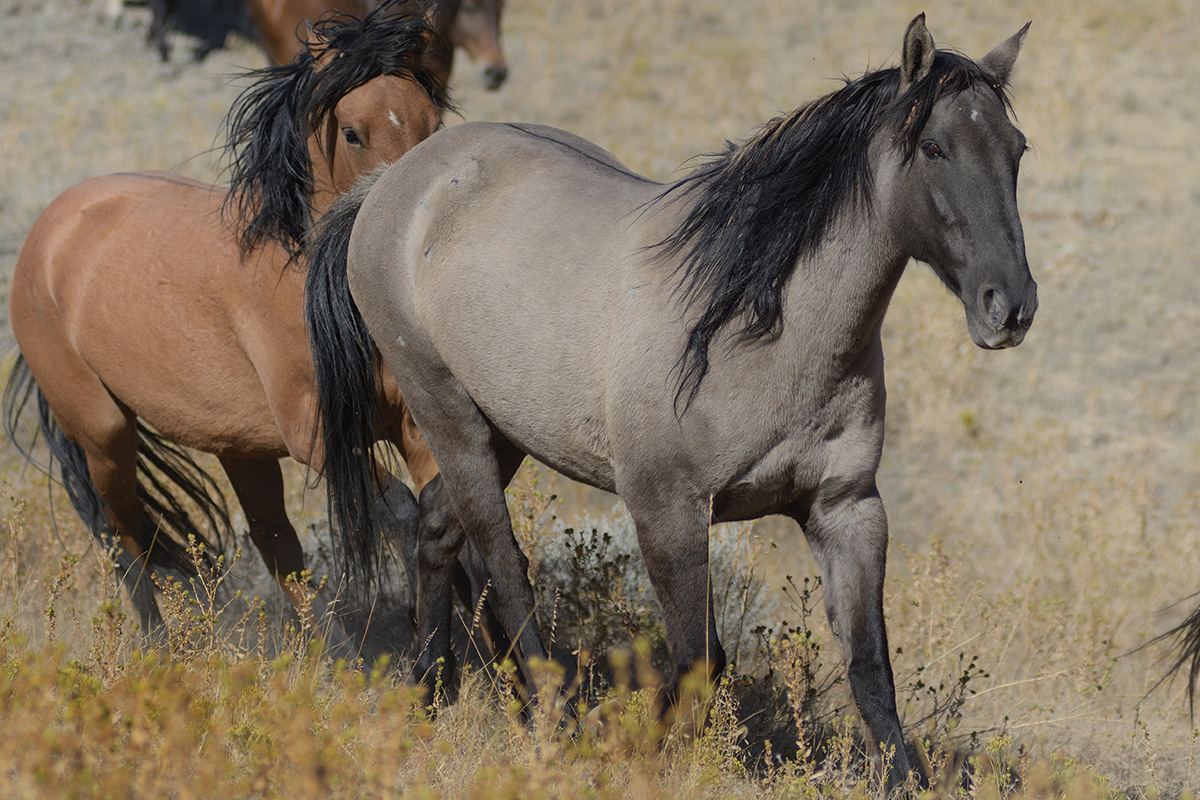
When the Spaniards arrived on the shores of the New World in the 15th century, they found a land void of horses. They couldn’t have known that horses had originally inhabited the Americas and that they were about to reintroduce them, changing the history of two continents. The horses that traveled with them from Spain and set their hooves in the New World would ultimately become the ancestors of the Indian Pony, along with a host of unique Americas breeds, like the Quarter Horse, Tennessee Walking Horse, and the Appaloosa. This Spanish horse — now called the Colonial Spanish Horse in modern times — was agile, hardy and adaptable, and over the centuries, spread throughout North America, evolving to adapt to its new land.
Diluting the Spanish Blood
By the late 1800s, Native Americans had been relegated to reservations, and many of their horses were lost or deliberately killed by government agents. Draft horse stallions were released on the range to “contaminate” the Spanish blood of horses that had escaped into the wild.
The goal was to destroy the fast, agile horse that had helped Native Americans ward off capture for so long—horses that might be of assistance should reservation Indians decide to revolt. Only herds in the most remote parts of the West escaped death and genetic dilution.
In the early 1900s, the capture of wild horses for profit became a common practice. So-called mustangers started rounding up wild horses for sale to slaughterhouses to be made into pet food. By the 1950s, the millions of Spanish-bred horses that had roamed the West were nearly extinct. Only those few isolated herds remained.
Fearing this special horse would soon disappear forever, some ranchers began capturing wild horses with strong Spanish characteristics that were living in distant areas of their ranches. Some also obtained Spanish-bred horses from Native Americans who still had some of the horses on their reservations, such as the Shoshone, Ute, Cheyenne and Choctaw.
Many of these horses had not been diluted with outside blood and were breeding true to type. Over time, various strains of these Colonial Spanish Horses were recognized according to their geographic location, each with its own unique history and characteristics.
Fast FactsHeight: 13.2 to 15 hands Color: All equine colors, markings and patterns. Dun and grulla are common, with striped legs. Overall Appearance: Head has a straight or slightly convex facial profile. Wide forehead with ear tips pointing inward. Low set, crescent-shaped nostrils. Neck is well-defined, fitting into a well laid-back shoulder. Back is short, and croup is sloping and rounded. Tail is low-set. Mane and tail are often long and full. Hooves are hard and don’t require shoes. Temperament: Eager, willing, affectionate. Disciplines: Trail, jumping, dressage, endurance, cow work, working equitation. |
Special Strains of Colonial Spanish Horses
Today, several Colonial Spanish Horse strains are being preserved by the American Livestock Breed Conservancy (ALBC) and several registries. The goal is to keep these strains alive and healthy. Although their numbers are small, preservationists are working to keep these legendary horses in the public eye.
Unlike the Mustangs currently living on public lands and under the management of the Bureau of Land Management (BLM), Colonial Spanish Horses are deemed to have a high concentration of Spanish blood. BLM Mustangs, sometimes called American Mustangs, usually carry a variety of breeds in their genes, including Quarter Horse and draft horse. Most of the horses with significant Spanish blood are now in captivity and are rarely found on the range.
The Colonial Spanish Horse bloodlines currently being preserved include distinct strains with unique histories. All of them feature one or more of the following strains in their pedigrees:
Choctaw: The Choctaw is one of the rarest Colonial Spanish Horse strains, and as its name suggests, is closely associated with the Choctaw Indian nation of the Deep South. When the Choctaw people were forced to leave their homeland and relocate to Indian Territory in Oklahoma in the 1830s, the Choctaw horse accompanied them on the Trail of Tears.
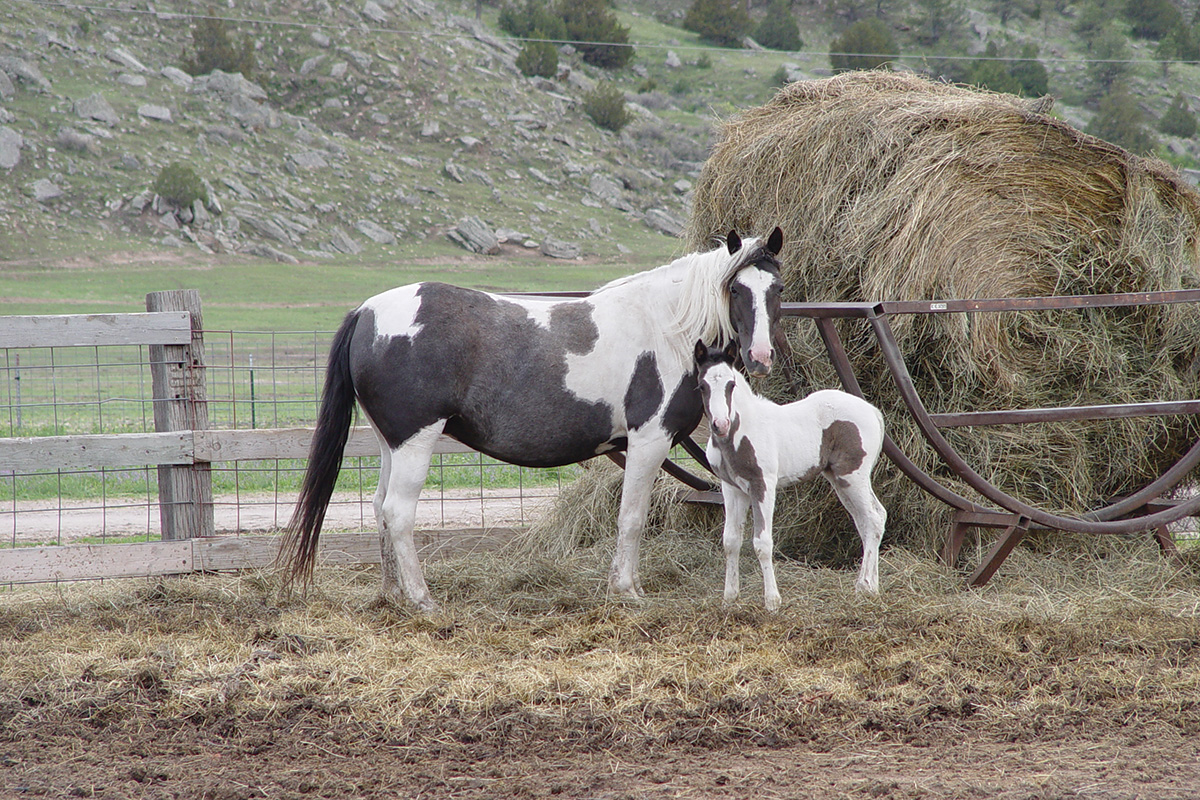
Sulphur: Sulphur horses were originally found in the mountain peaks and lowlands of Utah. They carry a large amount of Spanish blood and have many of the features found in the Colonial Spanish Horse. Some Sulphur horses still exist in the wild, where they are managed by the BLM in the area of Utah where this strain developed.
Wilbur-Cruce: The Wilbur-Cruce strain of Colonial Spanish Horse is also referred to as a Spanish Barb. Some experts believe this strain has the strongest resemblance to the original Spanish horse brought to the New World. Horses of this rare strain are believed to be descendants of Spanish mission horses brought from Mexico in the late 1870s to what is now the Wilbur Ranch in southern Arizona.
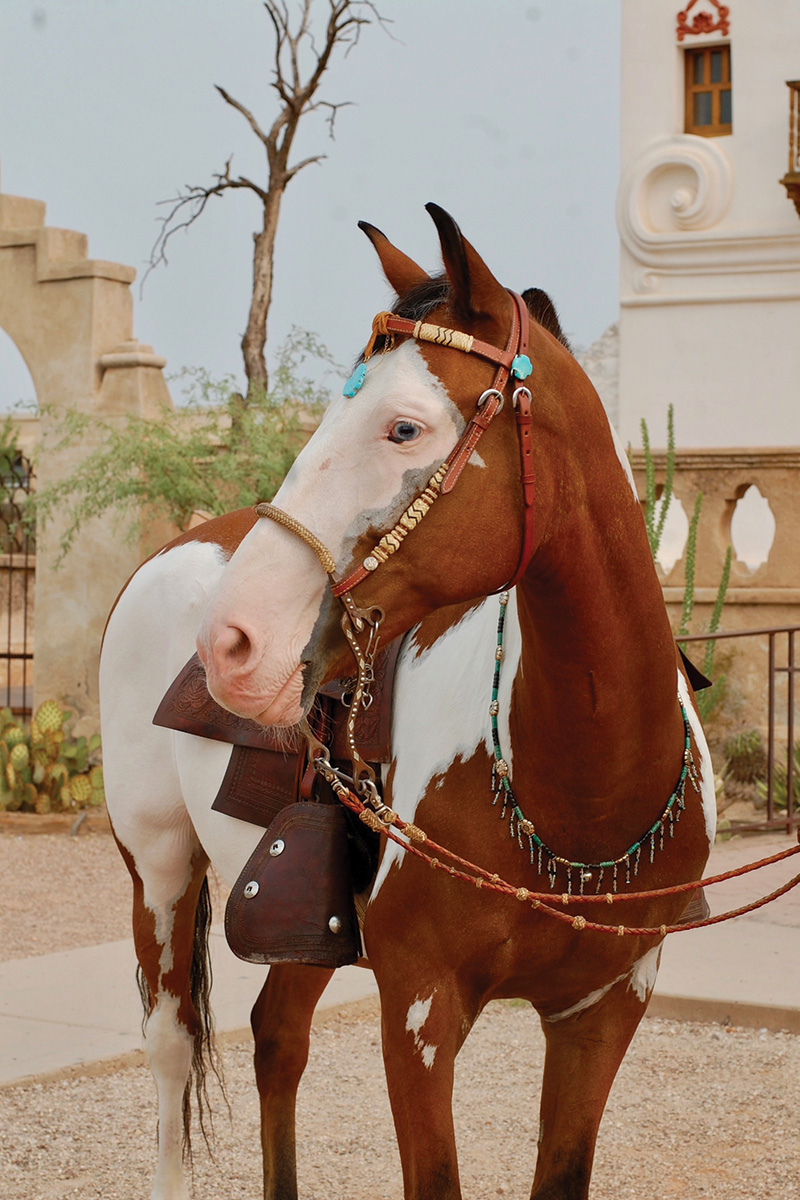
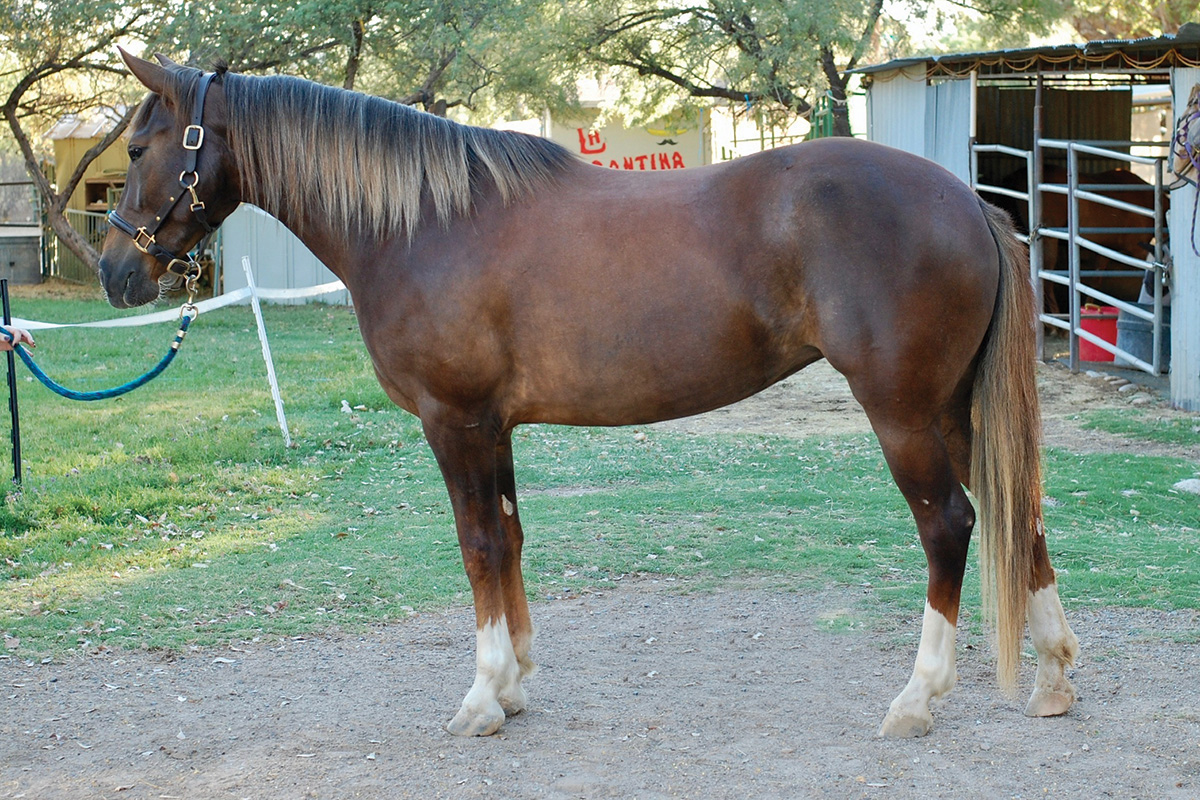
Baca Chica: Preservationists of the Baca Chica Spanish horse believe this strain is the most closely related to the horses brought to the New World by the Spanish explorer Hernán Cortés. The horses were bred for generations on the Baca Ranch in New Mexico.
Cerbat: The Cerbat strain of Colonial Spanish Horse was first gathered in the Cerbat Mountains of northwestern Arizona. About 70 of these horses still roam free and are managed by the BLM. Some Colonial Spanish Horse breeders are breeding only pure Cerbat horses in an attempt keep this bloodline from becoming lost.
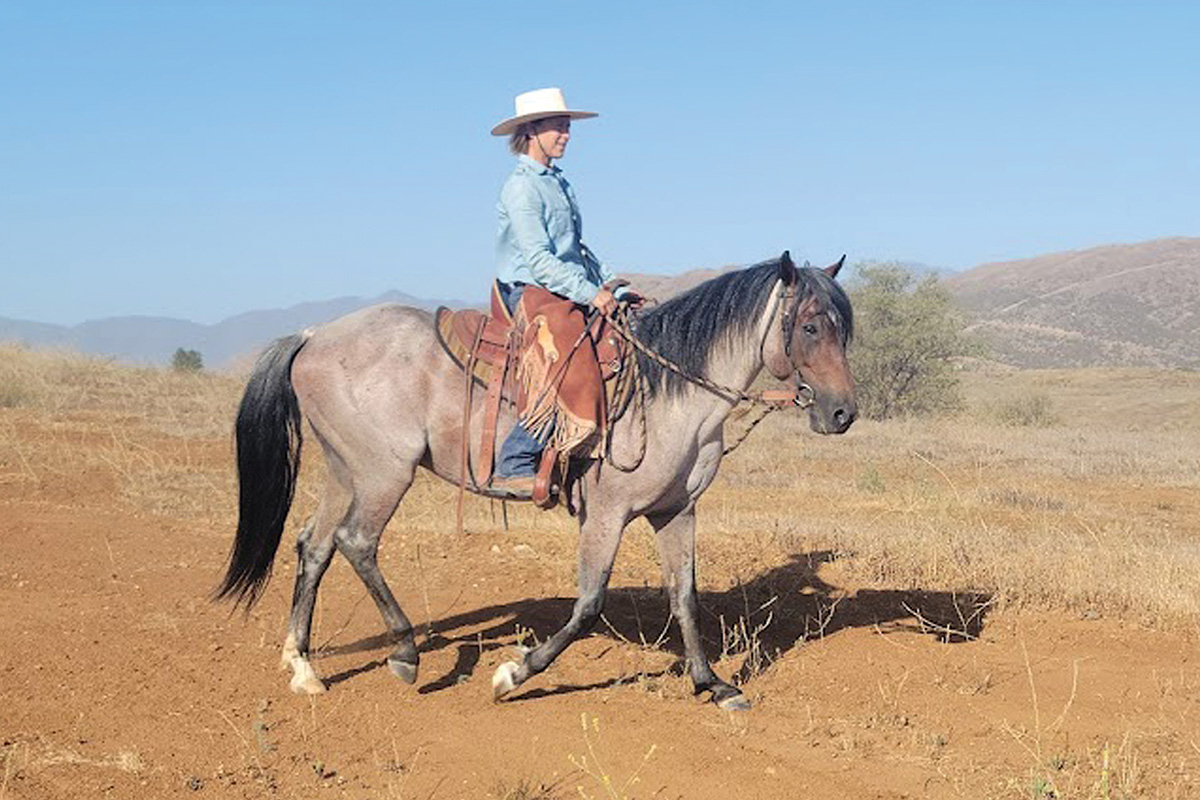
Bookcliff: The Bookcliff strain of wild Colonial Spanish Horses in Utah provided a major source of Spanish-type horses when ranchers began attempts to preserve the Spanish horse, and as a result, Bookcliff horses are often seen in the pedigrees of Colonial Spanish Horses. Experts believe some Bookcliff horses still exist in the wild, although this is difficult to confirm because they are believed to be in an inaccessible area of the Ute reservation.
Santa Cruz: In the 1800s, Spanish mission horses were brought to Santa Cruz Island off the coast of Central California. Here they lived in a semi-feral state until the 1990s, when the National Park Service called for their removal. The handful of horses taken from the island went to a sanctuary in Northern California, and an effort is underway to preserve this very rare strain.
Other strains, like the Kiger, Banker, Florida Cracker Horse, Carolina Marsh Tacky, Pryor and the Chickasaw are also part of the Colonial Spanish Horse family, and each has its own unique history.
In order to keep records on the various Colonial Spanish Horse strains and help preserve and promote them, several registries have been established over the decades. Each registry has its own requirements for registration, with some offering incentives for owners of registered horses with the goal of visibility for the breed.
The oldest Colonial Spanish Horse registry is the Spanish Mustang Registry, which was started in 1957 by the ranchers who first wished to preserve these special horses. Since then, the Southwest Spanish Mustang Association, the American Indian Horse Registry, the Spanish Barb Breeders Association and the Horse of the Americas Registry have all contributed to preserving and promoting these amazing horses.
Colonial Spanish Horse Registries◆ American Indian Horse Registry ◆ Horse of the Americas Registry ◆ Southwest Spanish Mustang Association |
This article about Colonial Spanish Horses appeared in the September 2022 issue of Horse Illustrated magazine. Click here to subscribe!

